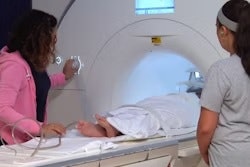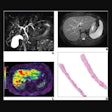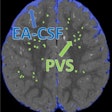More than nine in 10 pediatric radiologists reported that nonphysician providers are used often in the subspecialty, suggest findings published December 10 in the Journal of the American College of Radiology.
A team led by Shannon Farmakis, MD, from Mercy Children’s Hospital in St. Louis also found in its survey study that nearly one in 10 fully qualified respondents listed pediatric radiology among their top three hiring needs, most pediatric radiology subspecialties are allowed to telework, and more women work in pediatric radiology compared to overall radiology.
“As this survey is a baseline for future surveys, these represent areas that can be improved upon,” the Farmakis team wrote.
The American College of Radiology (ACR) Commission on Human Resource’s annual workforce survey collects data regarding practice types and sizes, demographic data on radiologists including subspecialty distribution, and hiring and retirement trends.
The researchers, however, noted that previous surveys lack data on the pediatric radiology workforce. They added that this subspecialty has been experiencing workforce shortage, increased volumes, increased staffing demands, and a reduction in the number of trainees selecting pediatric radiology for fellowship training.
The commission, along with ACR staff, redesigned the survey to include assessment of the current state of the pediatric radiology workforce. All ACR members were invited to participate, while previous surveys only allowed practice leaders and their proxies to participate. Farmakis and colleagues described results and trends from responses gathered for the 2021 survey, focusing on pediatric radiology.
The study included responses from 1,702 members from the ACR and the Radiology Business Management Association (RBMA). This included 407 decision-makers from both ACR and RBMA member databases (fully qualified), 987 non-decision-makers or rank-and-file radiologists (partially qualified), and 308 retired ACR members. The respondents represented 376 unique radiology practices across multiple practice settings.
The team reported the following findings as indicated by respondents:
- In academic practices, 72% of clinical time was spent in pediatrics compared to 16% in hospital/systems, 5% in private practice, and 4% teleradiology.
- Pediatric radiology subspecialization, defined as greater than 25% of time in subspecialty work, occurred more often in large practices.
- Pediatric body imaging is performed in the greatest percentage in medium-sized practices (36%) followed by large-sized practices (27%).
- In large-sized practices, pediatric musculoskeletal imaging is performed in the next largest percentage (25%) followed by pediatric neuroradiology (20%).
- Most pediatric subspecialties (81%) are allowed to telework.
- More women (57%) performed pediatric radiology compared to overall radiology at 28%.
- Nonphysician providers are used most prevalently in the pediatric radiology subspecialty.
Also, 9% of fully qualified respondents listed pediatric radiology among their top three hiring needs with all located in urban and suburban areas. Academic practices accounted for 56% of settings hiring pediatric radiologists, the team reported.
For the hiring needs finding, the study authors suggested that this is due to private practice radiology groups accounting for most survey respondents, making up most radiology practice types, and tending to have fewer radiologists spending 100% clinical time in pediatric radiology compared to academic and national practices.
“Furthermore, since the historical representation of pediatric radiology in the overall workforce is low, the 9% demand in qualified respondents may actually reflect the increased demand for pediatric radiologists,” they added.
The authors also wrote that the heavy use of nonphysician providers in pediatric radiology settings is to offset the demands of busy fluoroscopy schedules, increased clinical volumes, and staff shortages.
The full report can be found here.



















